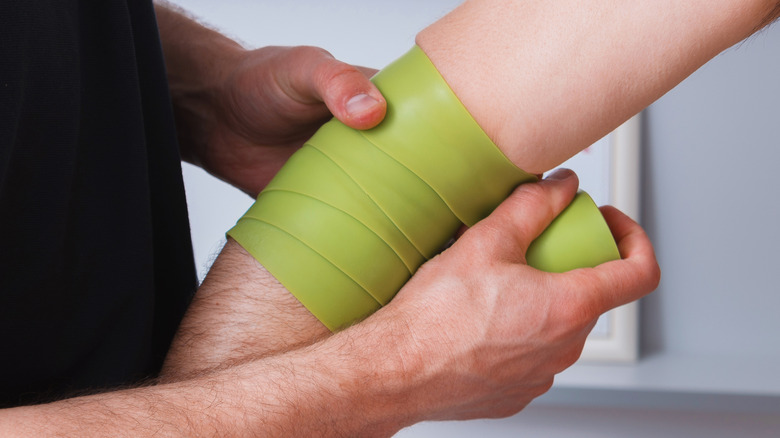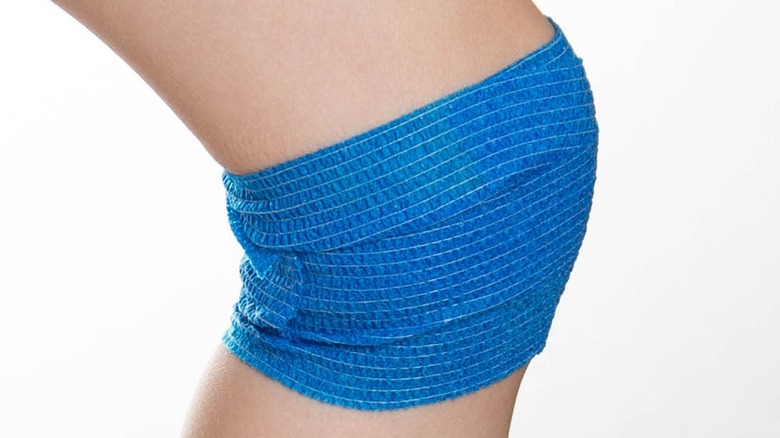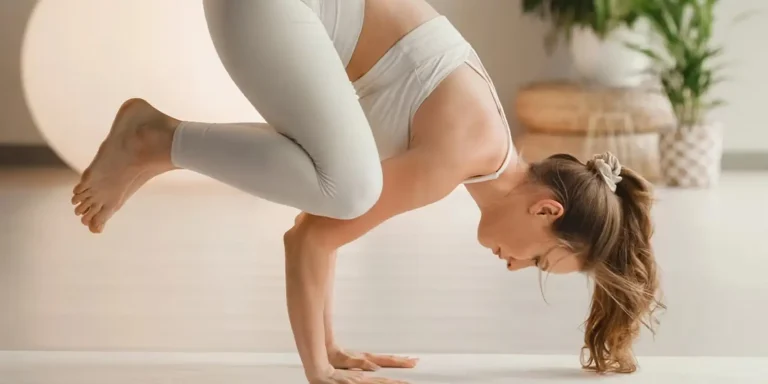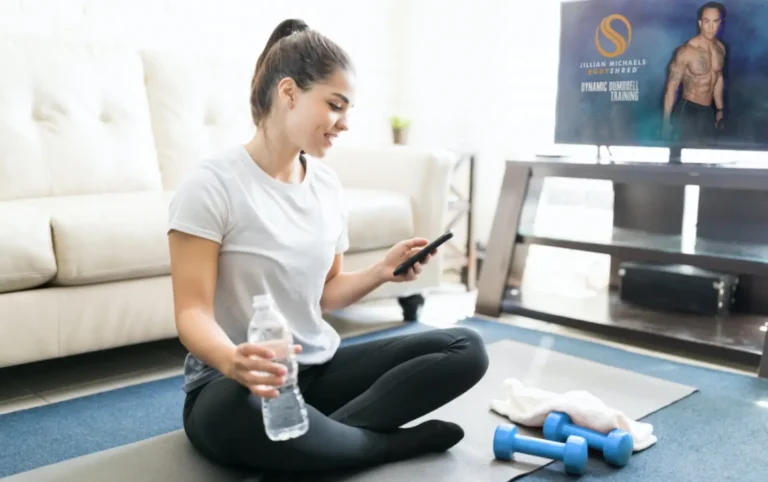Latex bands are common tools in the gym these days to add resistance to push-ups, assist pull-ups, and vary your squats. If you’ve seen a person wrap a latex band around the quad muscle, it’s not just a super-sized bandage — it’s muscle flossing. Others might call it voodoo or tissue flossing.
According to Healthline, muscle flossing is a type of compression therapy aimed at moving a joint or muscle group to restore its range of motion. It works by temporarily restricting the blood flow to the wrapped area for 30 seconds to two minutes. During this time, you work the muscle or joint through its range of motion. After the time is up, fresh blood moves through the area, supplying oxygen and nutrients to restore health. Think of it as a myofascial release for several tissues all at once. Muscle flossing can be done on the large muscles of the legs and arms, but you can also wrap your ankles, knees, elbows, or shoulders.
The theory of muscle flossing is that the joints will glide better as you shear the fascia in the wrapped area. This tells the nervous system to pay more attention to the joint or muscle (via Healthline).
Should you try muscle flossing?
Although muscle flossing can be relatively safe, one of the biggest mistakes is wrapping the band too tight, according to Healthline. If you feel that area getting numb, the band is too tight. If you’ve never tried muscle flossing, it’s best to connect with a physical therapist or athletic trainer to know the proper tension and wrapping technique. You’ll want to wrap around a specific area stretching the band at 50% tension and be sure to overlap the band by 50%. You’ll also wrap a few inches below and above the targeted muscle or joint, and tuck the end of the band underneath the wrapped area. Be sure not to keep the wrap on the muscle or joint for longer than two minutes (via Healthline).
Although some physical therapists have found muscle flossing to help improve the range of motion in the ankle and knee, research is still needed to see how this therapy works in the long term (via The Physio Lab).







